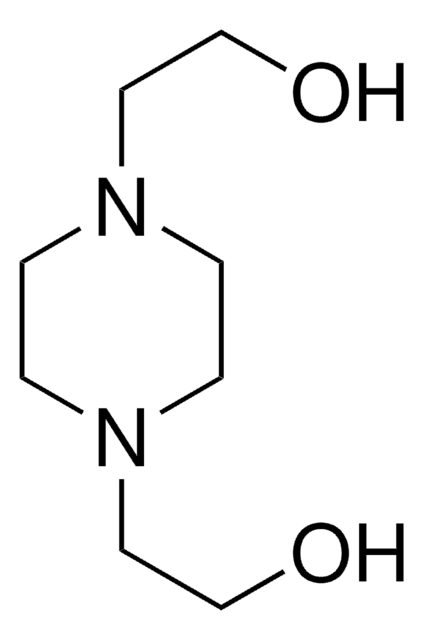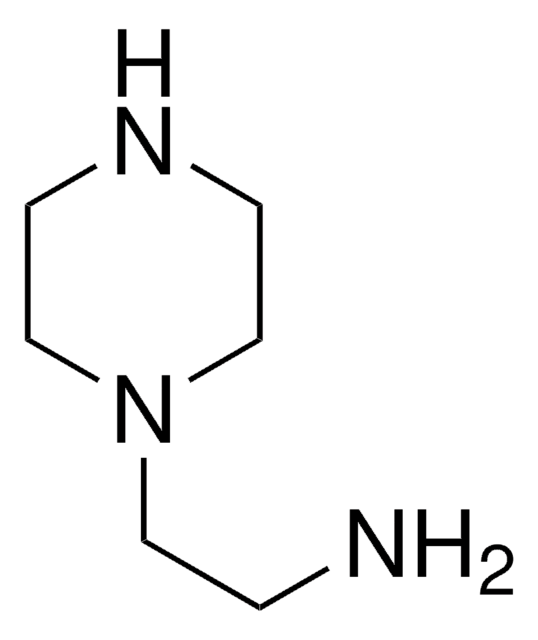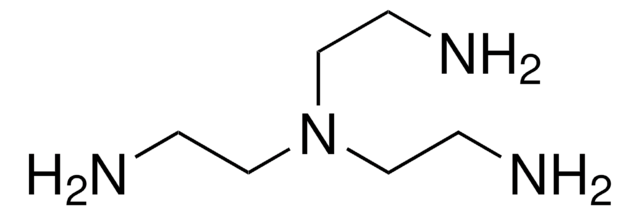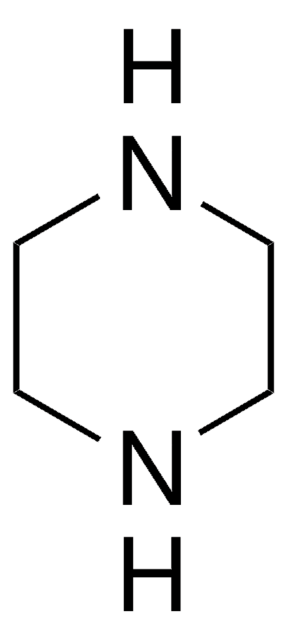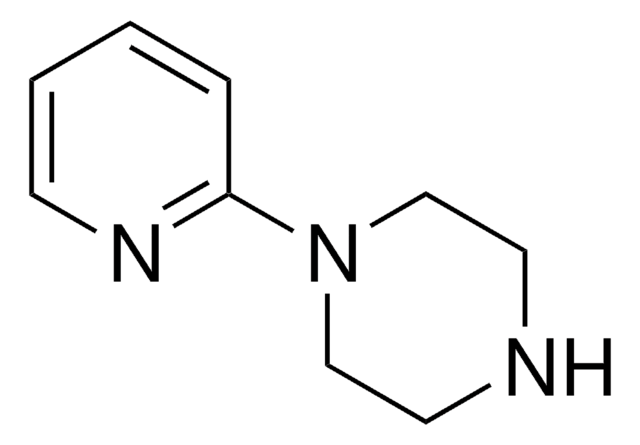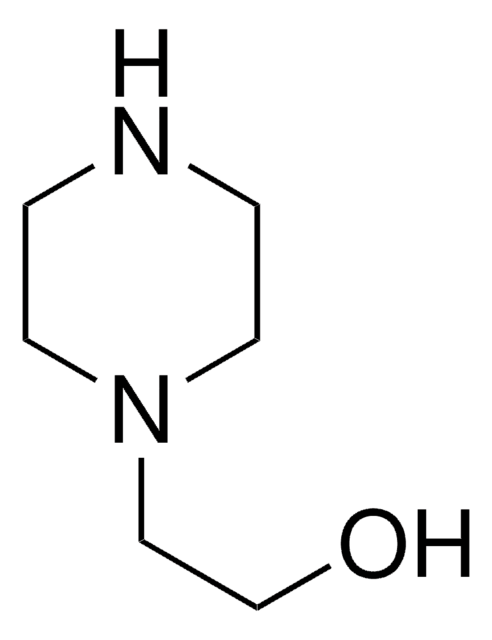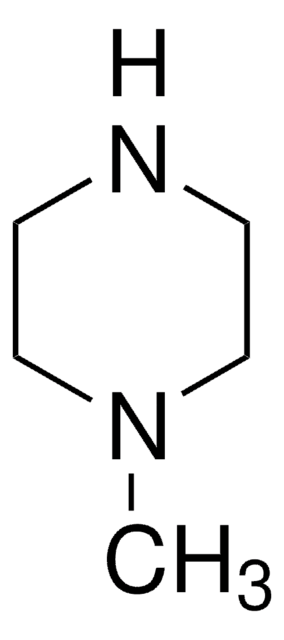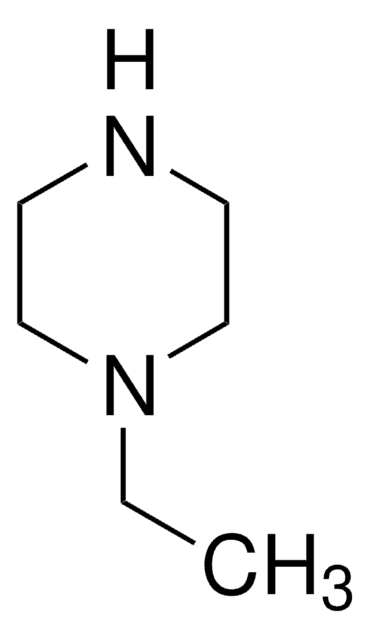Key Documents
239488
1,4-Bis(3-aminopropyl)piperazine
≥99%
Synonim(y):
1,4-(3-Aminopropyl)piperazine, 1,4-Piperazinebis(propylamine), 1,4-Piperazinedipropylamine, N,N′-Bis(γ-aminopropyl)piperazine, N,N′-Bis(3-aminopropyl)piperazine, [3-[4-(3-Aminopropyl)piperazin-1-yl]propyl]amine
About This Item
Polecane produkty
gęstość pary
6.9 (vs air)
Poziom jakości
Próba
≥99%
Postać
liquid
współczynnik refrakcji
n20/D 1.502 (lit.)
tw
150-152 °C/2 mmHg (lit.)
mp
15 °C (lit.)
gęstość
0.973 g/mL at 25 °C (lit.)
grupa funkcyjna
amine
ciąg SMILES
NCCCN1CCN(CCCN)CC1
InChI
1S/C10H24N4/c11-3-1-5-13-7-9-14(10-8-13)6-2-4-12/h1-12H2
Klucz InChI
XUSNPFGLKGCWGN-UHFFFAOYSA-N
informacje o genach
rat ... Grin2a(24409)
Szukasz podobnych produktów? Odwiedź Przewodnik dotyczący porównywania produktów
Opis ogólny
Zastosowanie
Hasło ostrzegawcze
Danger
Zwroty wskazujące rodzaj zagrożenia
Zwroty wskazujące środki ostrożności
Klasyfikacja zagrożeń
Eye Dam. 1 - Skin Corr. 1B
Kod klasy składowania
8A - Combustible corrosive hazardous materials
Klasa zagrożenia wodnego (WGK)
WGK 3
Temperatura zapłonu (°F)
325.4 °F - closed cup
Temperatura zapłonu (°C)
163 °C - closed cup
Środki ochrony indywidualnej
Faceshields, Gloves, Goggles, type ABEK (EN14387) respirator filter
Wybierz jedną z najnowszych wersji:
Masz już ten produkt?
Dokumenty związane z niedawno zakupionymi produktami zostały zamieszczone w Bibliotece dokumentów.
Nasz zespół naukowców ma doświadczenie we wszystkich obszarach badań, w tym w naukach przyrodniczych, materiałoznawstwie, syntezie chemicznej, chromatografii, analityce i wielu innych dziedzinach.
Skontaktuj się z zespołem ds. pomocy technicznej